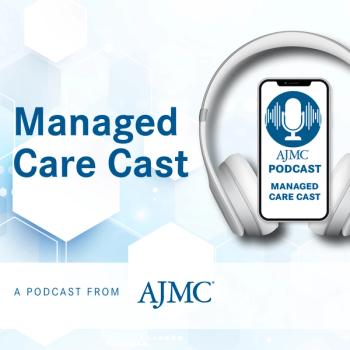
The American Journal of Managed Care
- October 2025
- Volume 31
- Issue 10
- Pages: 562-568
Neonatology Pricing and Network Participation Under State Balance Billing Regulations
This national study of neonatology services found no clear evidence that state surprise billing regulations influenced prices or provider network participation for the commercially insured.
ABSTRACT
Objective: Neonatology care can be costly for commercially insured families with minimal opportunities to choose in-network providers. Out-of-network neonatologists may surprise families with balance billings. This study examined the effects of state balance billing laws on neonatology prices and provider network participation.
Study Design: This study used a quasi-experimental, difference-in-differences design with 7 states that implemented balance billing regulations for out-of-network providers at in-network hospitals.
Methods: We used claims data from 2012 to 2019. We analyzed data for patients in fully insured plans who received neonatology services to compare price and surprise billing changes, before and after the policy, relative to controls. The main outcome measures were in-network, out-of-network, and combined total prices, as well as the proportion of claims billed in network to indicate provider network participation.
Results: For both independent dispute resolution (IDR) and benchmark rating approaches, the event studies did not show changes in in-network prices or combined prices, compared with control states, but they showed out-of-network price increases in states with the IDR approach. State-specific analyses indicated mixed results for both IDR and benchmark rating approaches.
Conclusions: The federal No Surprises Act, which went into effect in 2022, has allowed state regulations to continue to govern fully insured plans. We found substantial variation in the effects of state laws on pricing for neonatology services. There was no consistent evidence that state policies influenced prices or network participation of neonatology clinicians.
Am J Manag Care. 2025;31(10):562-568.
Takeaway Points
Neonatology care can be costly for families with minimal opportunities to choose in-network providers. Using a quasi-experimental, difference-in-differences design to examine states that implemented balance billing regulations for out-of-network providers at in-network hospitals, we found substantial variation in the effects of state laws on pricing for neonatology services.
- There was no consistent evidence that state policies influenced prices for care from neonatology clinicians.
- Some states with the independent dispute resolution approach may have experienced price increases.
- Some states that used regulated price approaches had decreased prices.
- Regulations had minimal effects on provider network participation.
Most children in the US are covered by health insurance through managed care plans.1 These plans establish provider networks of facilities and clinicians, and, in turn, pediatric generalists and specialists accept discounted prices to participate in the networks. Individuals can experience surprise billing when they receive bills from out-of-network (OON) providers not covered by insurance.2,3 Surprise billing encounters most often occur when patients are admitted to an in-network hospital but are treated by an OON provider. Each year, approximately 4 of 100 normal-birth-weight infants and 84 of 100 low-birth-weight infants are admitted to a neonatal intensive care unit (NICU).4 Most families with an infant admitted to a NICU at an in-network hospital are assigned neonatologists for their care. When the neonatologist is OON, the family has no opportunity to consider an alternative, in-network provider.5 In specialties such as emergency medicine, research has found that physicians used OON billing to secure higher payments, leveraging situations where patients lack choice in providers.6 Similarly, the OON neonatal providers can choose to balance bill the family, because patient demand for services is inelastic.
Surprise medical bills have been in the national spotlight in recent years and have generated numerous consumer grievances and congressional testimonials.7,8 In response, Congress passed the No Surprises Act (NSA), which went into effect in January 2022. The NSA was designed to protect consumers from balance billing when patients receive care during an in-network hospital stay from an OON provider, such as in OON neonatology encounters. Prior to the implementation of the NSA, some states passed legislation to protect patients from balance billing by OON clinicians at in-network facilities. These states used various methods to regulate and resolve OON reimbursements to clinicians and facilities. Merely prohibiting the practice of balance billing may not automatically result in lower OON prices, but the mechanisms of specific policy designs can affect how prices change. The effects of these state policies on pricing and surprise billing practices are expected to differ depending on how reimbursements to providers are structured. Some states regulate pricing by using a specific payment benchmark (eg, customary charges), whereas others employ an independent dispute resolution (IDR) process to determine reimbursement from health plans to OON providers (eAppendix 1 [
Our study focused on the experiences of fully insured plan enrollees, which covers approximately one-third of the commercially insured population in the US. The NSA’s dispute resolution mechanism allows states to specify how payment disputes between insurers and providers are resolved. Further, although the federal NSA governs both fully insured and self-funded plans, the federal law allows states with existing laws to continue to use state regulations for fully insured plans.9 Therefore, states continued to strengthen surprise billing protections even after the passage of the NSA.10 Our study provides critical and timely empirical evidence of legislative effects of recent state balance billing policies as states and the federal government contemplate further adjustments to legislation.
METHODS
Data
This study used multipayer commercial claims data from the Health Care Cost Institute that included one-third of the employer-sponsored insurance population in the US.11 The study interval, 2012-2019, represented the latest available data before the COVID-19 pandemic. The data included detailed procedure information, insurer payments, patient cost-sharing, dates of service, health plan type (eg, health maintenance organization), and patient residence state and zip code. A network status indicator allowed identification of in-network and OON claims.
Our approach for standardizing prices was essentially comparable to Medicare’s. Thus, we merged claims data with the 2012-2019 Medicare fee schedule files by procedure code and zip code.12 Data on state balance billing laws were collected from public reports, states’ legislative websites, and the LexisNexis legal research database.
Study Sample
We captured claims for neonatal intensive care and critical care services during a hospitalization.13 We excluded claims that were unlikely to be commercial managed care claims and claims with miscoded information. We also excluded claims with multiple claim lines, those that had negative or zero allowed amounts, claims that were missing the provider’s masked National Provider Identifier or network indicator, and claims from non-US zip codes. Last, we identified and analyzed only claims for fully insured enrollees.
Outcome Measures
Price measurements. Because the effects of regulating OON pricing could also affect in-network provider participation and payments, we analyzed both OON and in-network neonatology prices. We measured price as the total allowed amount paid to neonatal clinicians for each claim, including both the insurer payment and the patient’s cost sharing for deductibles and co-payments. We case mix–adjusted payments to make prices comparable across geographic areas and services. We converted prices to amounts comparable to what Medicare uses to determine payment. We divided the allowed amount by the total geographically adjusted relative value units (RVUs) for each claim to determine the conversion factor. Thus, our pricing measures equaled total allowed payment amounts per RVU for each clinician.
Network participation. By prohibiting physicians from balance billing patients and regulating OON reimbursement, balance billing laws could change clinicians’ incentives to join insurance networks. Thus, we analyzed clinician network participation, measured as the proportion of claims billed in network.
Addressing composition issue. An analysis of in-network or OON reimbursements could reflect a shift in network participation, even if the underlying reimbursements remained the same. For example, neonatologists with lower OON reimbursement prior to the NSA may have elected to join the networks after a certain policy was implemented. Thus, the average OON price would increase simply due to the composition of in-network neonatologists. To address this composition issue, we also analyzed combined prices, agnostic to network status.
Research Design
This study used a quasi-experimental, difference-in-differences design. States that implemented balance billing regulations for nonemergent hospital services were considered the treatment states. Under a rate-setting approach, the hypothesis was that OON prices would decrease in states with balance billing regulations compared with states without regulations. Under a dispute resolution approach, the hypothesis was that OON prices would increase in states with balance billing regulations compared with states without regulations.
We conducted a retrospective analysis for infants who received neonatology services during hospitalizations between January 1, 2012, and December 31, 2019. We compared price changes before and after the implementation of balance billing laws in 7 treatment states vs states without balance billing legislation. We also examined the effects of different payment resolutions (ie, IDR and benchmark rate settings). Arizona, New York, and New Jersey adopted an IDR approach, whereas California, Connecticut, Florida, and Maine adopted benchmark rate settings. Minnesota, New Hampshire, and Oregon implemented policies but were not evaluated in our study because of small sample sizes. Because of significant geographic heterogeneity in neonatal surprise billing practices,4,14,15 states that passed balance billing laws could have differed in unobservable ways from states that had never passed similar laws. Therefore, our control group was restricted to 6 states that passed balance billing laws in 2020 or 2021, after our observation period had ended (Georgia, Michigan, New Mexico, Ohio, Virginia, and Washington). We conducted sensitivity analyses using all states that did not implement policies during our observation period. The analyses for treatment states with benchmark reimbursement policies and states with IDR rules were conducted separately. The Ohio State University institutional review board exempted the study.
Statistical Analysis
We first estimated the event study for quarterly average effects of reimbursement policies, by the IDR and benchmark rating approaches, respectively. The statistical modeling details were described in an earlier paper.16 Regulations can differ substantially across states, particularly in important nuances when considering OON reimbursements. Therefore, using a difference-in-differences approach, we further estimated the policy effects in each treatment state after implementation. The main variable of interest was an indicator for whether a neonatology clinician was in a treatment state in the time period after treatment. Our analysis identified the differences between the postpolicy outcomes and prepolicy outcomes, in a treatment state, relative to controls. We used a 2-way fixed effects model with states and quarters as fixed effects. Detailed modeling specifications were previously described.16
Because there was only 1 treatment state at the policy level for each analysis, P values for the average treatment effects were evaluated using randomization inference. This inference method is less likely to reach statistical significance than using clustered SEs, but it produces more appropriate estimates for the significance level of treatment effects when there are few treated subjects (ie, states).16-18
RESULTS
On average, based on the price measures standardized against the Medicare fee schedule, neonatology services were paid in network at approximately 2.7 times the Medicare rate ($96.16 / $35) and 3.0 times the Medicare rate for OON prices ($106.53 / $35), with large SDs (
For both IDR and benchmark rating approaches, the event study analyses (
The state-specific treatment price effects are displayed in
Among states that regulated OON reimbursements with benchmark rates, substantive price changes were observed in some states, but most were not statistically significant. There were clear price increases in Connecticut following implementation of the policy: OON prices increased by more than 90 percentage points, in-network prices by 22 percentage points, and combined prices by 46 percentage points. California and Florida had increases in OON prices, although they were statistically insignificant. California saw an increase in combined price by 11 percentage points (P < .01) relative to controls after the benchmark rating policy. However, event studies for California revealed that these increases only occurred briefly after the policy was implemented, before dropping back to similar rates relative to controls. Furthermore, prices were increasing in California relative to controls prior to the implementation of the state law. Maine saw drops in both OON prices and combined prices after the policy was implemented. We did not find evidence that balance billing policies affected the proportion of claims billed in network.
There were some cases in which the prices in treatment states changed faster or slower than control states ahead of the policy, such as in Florida and Maine. We conducted synthetic control analyses to address this issue.16 Findings from the synthetic control analyses were largely consistent with those of the main difference-in-differences analyses but varied in effect magnitude (eAppendix 2). Notably, some findings differed from the main analyses. For example, in Maine, all prices dropped. In particular, the OON prices dropped by almost 17 percentage points after the benchmark rules were implemented, relative to controls. Florida experienced price decreases for in-network, OON, and combined prices under the benchmark approach, although the differences were statistically insignificant.
We also performed other robustness analyses. First, we conducted the analyses using conventional clustered SEs. The conventional analysis methods led to more statistical significance. Second, we conducted the analysis at the clinician level. Last, we also conducted sensitivity analyses using all states that did not implement policies during our observation period. For all robustness analyses, the analyses were generally consistent with the primary findings reported.
DISCUSSION
Balance billings from neonatal hospital stays can impose substantial financial and emotional burdens on families with newborns who had neonatology care. In fact, the recent NSA specified neonatology as one of several specialties during hospital care for which notice of provider network status or consent from patients cannot exempt the clinician from surprise billing rules, because patients are typically unable to select an in-network provider.19 This study offered several empirical findings to inform further policy-making processes. First, the fact that we observed only 5% of neonatology claims billed by OON providers warrants special mention. The rarity of OON neonatologists is consistent with other studies of OON encounters with specialists.20 Although the rate of network participation was similar to the participation rate of other hospital-based specialists, in general, neonatology services led to much fewer potential surprise billing episodes compared with anesthesiology or pathology.21
Regarding state policy effects on prices and network participation, we found an overall lack of clear evidence of state policy effects on prices or clinician network status, whether states adopted an IDR process or established benchmark rate. However, the absence of some trends was counterintuitive. For example, we expected that the IDR approach to reimbursement resolution that was tied to charges would inflate prices.22 Although we did find general price increases in states with IDR, most changes were not statistically significant, except for in-network price decreases in New Jersey. However, a prior law in New Jersey required insurers to pay ambulance providers their full charges. A new law implemented in 2018 that considered charge percentiles, instead of full charges, likely resulted in lower reimbursements to OON ground ambulance providers than before.23
States that implemented benchmark rates using in-network or Medicare rates, a strategy designed to curb reimbursements, experienced mixed effects. Some states saw minimal effects, some had price increases after the policy was implemented (eg, Connecticut), and others (eg, Maine) experienced decreased OON prices. Some of the patterns may be a product of policy complexities. Connecticut implemented 2 contrasting reimbursement rules for surprise billing situations—a benchmark rate tied to charges for emergency care and an in-network rate benchmark for nonemergent hospital care. Prior work found that after Connecticut’s charge-related policy, OON prices increased for emergency care.24 It is possible that the complexity of Connecticut’s policy resulted in the unclear effects on neonatology prices.
Some of our findings deviated from those of earlier surprise billing studies. Some of the differences are likely due to longer observation periods in our study. Earlier evidence in California indicated that a share of claims billed in network for neonatal-perinatal medicine increased approximately 5% in several quarters immediately after the policy, implying a possible price reduction.25 Others have found a decline in OON prices paid for anesthesiology services immediately after California’s law.26 Our study of neonatology using data from longer observation periods did not show significant price changes on average, relative to controls.
Our mixed findings may also be due to wide price variation within small areas. Recent data revealed that reimbursements from commercial plans range from lower than Medicare rates to more than 200% of Medicare rates, within a state.27 The price variations within a state can mask potential effects of state-level policies. Further, our results may reflect the heterogeneity in the different health care markets where hospital market shares are used to leverage pricing. For example, for providers that previously received payments below the region average, their reimbursements may increase after benchmark rates based on average in-network rates. This might explain why some states with benchmark rates did not experience overall price reductions, on average.
Limitations
Several limitations related to using claims data are worth mentioning. First, we did not have data on clinician employment status. For instance, neonatologists employed by physician staffing companies could influence higher pricing levels.28 Without the private equity ownership data, we could not rule out the possibility that corporate ownership was not completely random in states with balance billing regulations and states without. Additionally, we could not observe whether an OON clinician sent a balance bill to the patient, its magnitude, or whether the OON payment disputes were litigated. Many disputes might have been resolved between patients and hospital financial departments outside the scope of state policies. Moreover, Maine expanded Medicaid to childless adults soon after its state balance billing law went into effect. We could not entirely rule out the potential Medicaid expansion’s influence on neonatal care demand. Yet, Medicaid expansion should not exhibit substantial impact on the demand for neonatology services because low-income pregnant women and children were part of the traditional Medicaid population. Further, our findings about price changes could have reflected unobserved market-based differences. These limitations underscore the need for more comprehensive data and longer-term analyses to fully understand the impact of surprise billing regulations.
CONCLUSIONS
Our findings reflect that the consequences of network participation status for neonatal clinicians raise issues about the effectiveness of state surprise billing regulations. They are typically issued and governed by the state’s department of insurance, which carries limited enforcing capacity, especially in complex areas such as neonatology services. Further, many surprise billing disputes may have been resolved between patients and a hospital’s financial department, regardless of state policies. In conclusion, recent experiences with state balance billing policies suggest that state-specific regulations result in mixed effects on neonatology service pricing and network participation.
Author Affiliations: Division of Health Services Management and Policy, College of Public Health, The Ohio State University (WYX, YL), Columbus, OH; Henry W. Bloch School of Management, The University of Missouri–Kansas City (CG), Kansas City, MO; Division of General Internal Medicine, College of Medicine, The Ohio State University (SMR), Columbus, OH; now with Nationwide Children’s Hospital (YL), Columbus, OH.
Source of Funding: Robert Wood Johnson Foundation (Investigating Effects of State Surprise Billing Regulations on Commercial Insurance Plan Enrollees; grant 78955).
Prior Presentation: This work was presented at the AcademyHealth Annual Research Meeting (June 29-July 2, 2024; Baltimore, MD).
Author Disclosures: Dr Garmon has received consulting fees from Compass Lexecon. Dr Retchin is a director on the board of Aveanna Healthcare, a for-profit public company that provides home and hospice care to adults and children in 33 states, and as a director receives fees and stock as compensation. The remaining authors report no relationship or financial interest with any entity that would pose a conflict of interest with the subject matter of this article.
Authorship Information: Concept and design (WYX, CG); acquisition of data (WYX, YL); analysis and interpretation of data (WYX, CG, SMR, YL); drafting of the manuscript (WYX, CG, SMR); critical revision of the manuscript for important intellectual content (WYX, CG, SMR); statistical analysis (CG); obtaining funding (WYX); administrative, technical, or logistic support (WYX, YL); and supervision (WYX, SMR).
Address Correspondence to: Wendy Yi Xu, PhD, MS, Division of Health Services Management and Policy, College of Public Health, The Ohio State University, 1841 Neil Ave, Cunz Hall 208, Columbus, OH 43210-1132. Email: xu.1636@osu.edu.
REFERENCES
1. Health insurance coverage of children 0-18. KFF. Accessed November 12, 2023.
2. Wong CA, Kan K, Cidav Z, Nathenson R, Polsky D. Pediatric and adult physician networks in Affordable Care Act marketplace plans. Pediatrics. 2017;139(4):e20163117. doi:10.1542/peds.2016-3117
3. Colvin JD, Hall M, Thurm C, et al. Hypothetical network adequacy schemes for children fail to ensure patients’ access to in-network children’s hospital. Health Aff (Millwood). 2018;37(6):873-880. doi:10.1377/hlthaff.2017.1339
4. Harrison W, Goodman D. Epidemiologic trends in neonatal intensive care, 2007-2012. JAMA Pediatr. 2015;169(9):855-862. doi:10.1001/jamapediatrics.2015.1305
5. Meyer H. A baby spent 36 days in an in-network NICU: why did the hospital next door send a bill? KFF Health News. January 30, 2023. Accessed December 2, 2023.
6. Cooper Z, Scott Morton F, Shekita N. Surprise! out-of-network billing for emergency care in the United States. J Polit Econ. 2020;128(9):3626-3677. doi:10.1086/708819
7. Hancock J. An $80,000 tab for newborns lays out a loophole in the new law to curb surprise bills. KFF Health News. February 23, 2022. Accessed December 2, 2023.
8. AB-72 health care coverage: out-of-network coverage. California Legislative Information. September 23, 2016. Accessed June 21, 2023.
9. O’Brien M. Map: No Surprises Act enforcement. The Commonwealth Fund. March 14, 2022. Accessed October 8, 2022.
10. O’Brien M, Hoadley J. States act to strengthen surprise billing protections even after passage of No Surprises Act. The Commonwealth Fund. March 16, 2023. Accessed March 15, 2024.
11. Health Care Cost Institute. Accessed October 1, 2024.
12. Documentation and files. CMS. Accessed August 25, 2022.
13. Inpatient neonatal intensive care services and pediatric and neonatal critical care services CPT code range 99466- 99480. Codify by AAPC. Accessed December 5, 2023.
14. Nikpay S, Nshuti L, Richards M, Buntin MB, Polsky D, Graves JA. Geographic variation in hospital-based physician participation in insurance networks. JAMA Netw Open. 2022;5(5):e2215414. doi:10.1001/jamanetworkopen.2022.15414
15. Chhabra KR, Sheetz KH, Nuliyalu U, Dekhne MS, Ryan AM, Dimick JB. Out-of-network bills for privately insured patients undergoing elective surgery with in-network primary surgeons and facilities. JAMA. 2020;323(6):538-547. doi:10.1001/jama.2019.21463
16. Garmon C, Li Y, Retchin SM, Xu WY. The impact of surprise billing laws on emergency services. Health Econ. 2024;33(11):2450-2462. doi:10.1002/hec.4874
17. MacKinnon JG, Webb MD. Randomization inference for difference-in-differences with few treated clusters. J Econom. 2020;218(2):435-450. doi:10.1016/j.jeconom.2020.04.024
18. Kaestner R. Did Massachusetts health care reform lower mortality? no according to randomization inference. Stat Public Policy (Phila). 2016;3(1):1-6. doi:10.1080/2330443X.2015.1102667
19. Adler L, Fiedler M, Ginsburg PB, Hall M, Ippolito B, Trish E. Understanding the No Surprises Act. Brookings. February 4, 2021. Accessed January 5, 2024.
20. Xu WY, Li Y, Song C, Bose-Brill S, Retchin SM. Out-of-network care in commercially insured pediatric patients according to medical complexity. Med Care. 2022;60(5):375-380. doi:10.1097/MLR.0000000000001705
21. Garmon C, Li Y, Retchin SM, Xu WY. The impact of surprise billing laws on hospital-based physician prices and network participation. Health Econ Policy Law. Published online December 11, 2024. doi:10.1017/S1744133124000239
22. Gordon AS, Liu Y, Chartock BL, Chi WC. Provider charges and state surprise billing laws: evidence from New York and California. Health Aff (Millwood). 2022;41(9):1316-1323. doi:10.1377/hlthaff.2021.01332
23. Chartock BL, Adler L, Ly B, Duffy E, Trish E. Arbitration over out-of-network medical bills: evidence from New Jersey payment disputes. Health Aff (Millwood). 2021;40(1):130-137. doi:10.1377/hlthaff.2020.00217
24. Adler L, Duffy E, Ly B, Milhaupt C, Trish E. Changes in emergency physician service prices after Connecticut’s 2016 surprise billing law. Brookings. September 23, 2021. Accessed December 5, 2023.
25. Adler L, Duffy E, Ly B, Milhaupt C, Trish E. California saw reduction in out-of-network care from affected specialties after 2017 surprise billing law. Brookings. September 26, 2019. Accessed December 5, 2023.
26. La Forgia A, Bond AM, Braun RT, Kjaer K, Zhang M, Casalino LP. Association of surprise-billing legislation with prices paid to in-network and out-of-network anesthesiologists in California, Florida, and New York: an economic analysis. JAMA Intern Med. 2021;181(10):1324-1331. doi:10.1001/jamainternmed.2021.4564
27. Johnson B, Kennedy K, Kurowski D, et al. Comparing commercial and Medicare professional service prices. Health Care Cost Institute. August 13, 2020. Accessed December 5, 2023.
28. Yu J, Tyler Braun R, Bond AS, et al. Physician management companies and neonatology prices, utilization, and clinical outcomes. Pediatrics. 2023;151(4):e2022057931. doi:10.1542/peds.2022-057931
Articles in this issue
Newsletter
Stay ahead of policy, cost, and value—subscribe to AJMC for expert insights at the intersection of clinical care and health economics.








































